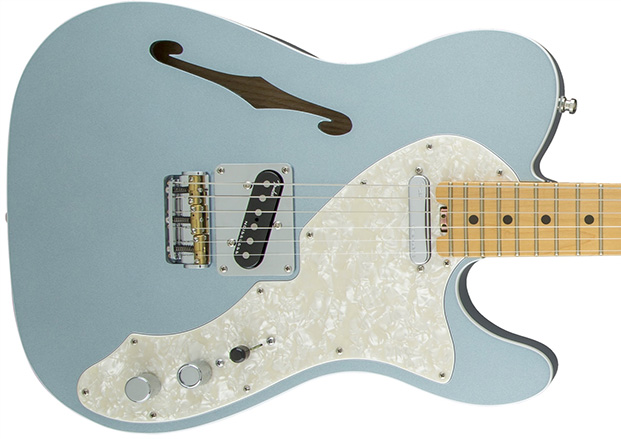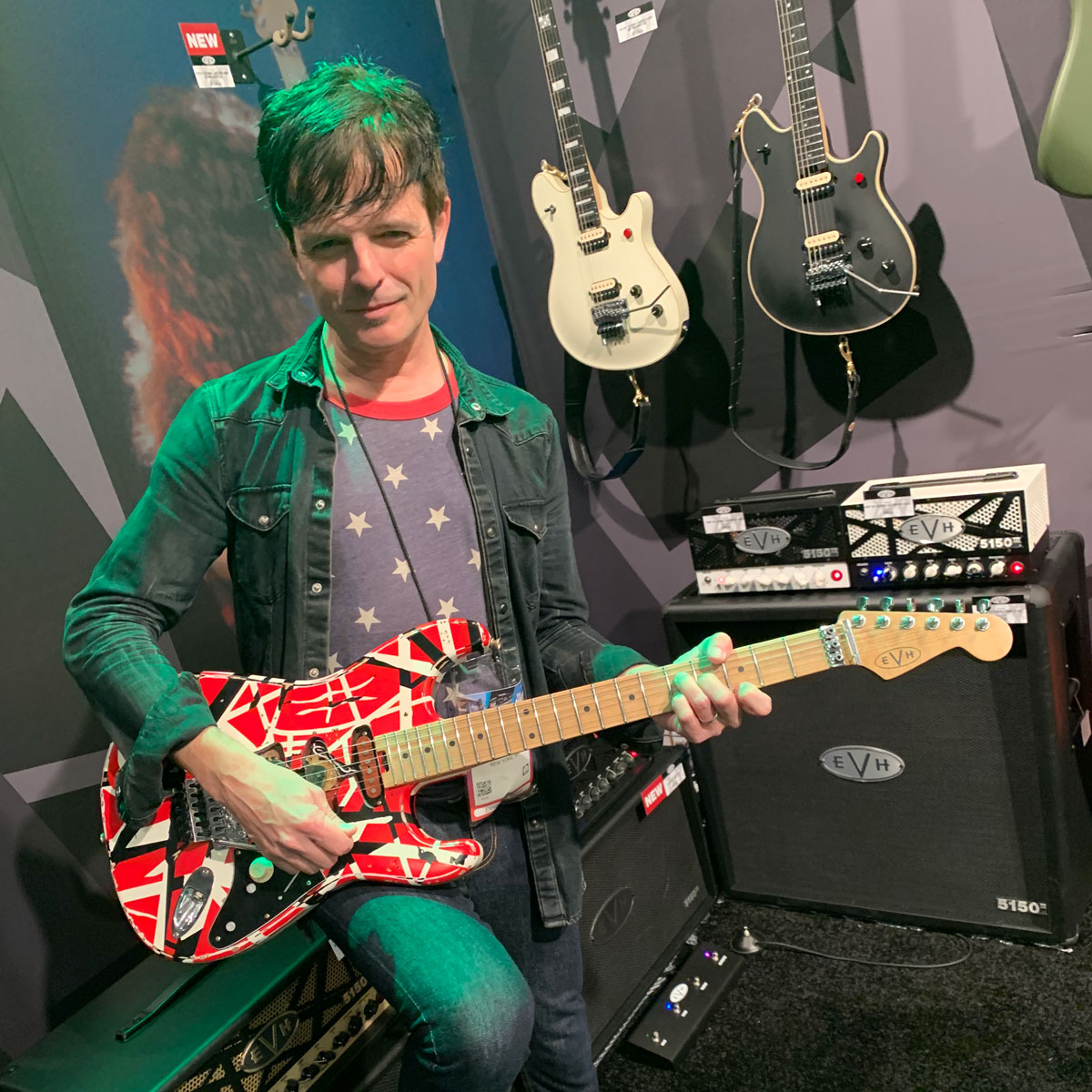Review: Fender American Elite Telecaster Thinline

PLATINUM AWARD
Fender’s iconic guitars and basses are considered to be among the most in demand instruments for the working musician.
Even as player’s demands have evolved along with the musical climate, Fender has also pushed the creative envelope to continually refine their classic instruments to make them infinitely better, so much so that you can easily say that innovation has become the company’s calling card. With the launch of the 2016 American Elite Series, which includes Stratocaster and Telecaster guitars, Jazz, Precision and Dimension basses, Fender has made some notably advanced and impressive design changes for these well-known models.
For this review, I checked out the Fender American Elite Telecaster Thinline, which blends all the cosmetics of a traditional Telecaster Thinline, along with cleverly infused modern tweaks that make it not only incredibly versatile, but the only guitar you’ll ever want to play.
FEATURES
Outside of its lightweight ash body, semi-hollow construction and satin finish maple neck, just about everything else on the Elite Telecaster Thinline is completely modified for feel and upgraded for performance and tone. There is no denying the guitar is well built, with every small detail thoughtfully considered. Among the many improvements include its perfectly carved, compound “C” neck shape that subtly tapers to a comfortable “D” profile as you climb the neck, a 9.5- to 14-inch compound radius fingerboard that makes fretting out impossible, and an asymmetrical neck heel that feels unobtrusive when playing in the upper register.
Other beneficial features are the guitar’s dual action truss rod with easy access spoke wheel, which makes adjusting neck relief a no hassle affair, and the inclusion of short-post locking tuners. The Thinline also forgoes the traditional tele bridge plate with a screwless mount suspension bridge with intonatable brass saddles for increased string vibration, which results in more sustain and top end response, in addition to top loaded string changing. The guitar features fourth generation Noiseless pickups combined with Fender’s popular S-1 switching (push-activated atop the volume control), which engages series or parallel wiring options, master tone control and a three-position switch.
Get The Pick Newsletter
All the latest guitar news, interviews, lessons, reviews, deals and more, direct to your inbox!
PERFORMANCE
The first thing I noticed about the Elite Telecaster Thinline is just how incredibly loud and vibrant the guitar sounds unplugged. It also just feels great. Fender’s precision neck carves always possess an effortless contour, and this particular neck feels tailor-made to fit comfortably snug in the pocket of my hand. Ringing out a couple chords and rapid-fire double stops unleashes the familiar Telecaster snap because of its elastic string tension, and the flat fingerboard radius contributes to smooth execution of pedal steel and chicken pickin’ licks, and even wide interval bends. I found it hard to put this guitar down because it’s just so damn easy to play.
Using a variety of high-gain and classic tube amplifiers, the Elite Thinline doesn’t disappoint in tone. The new Noiseless pickups deliver on their promise of being noise-free but also sound clear and defined. There’s warmth to the overall tone in cleaner settings, but the guitar really starts to sing with powerful low-end response and crisp highs by driving it with pre-amp distortion. For more heft, I set the pickup switch in the middle and activated the S-1 switching for series operation, which acts as a thickening agent, prompting the guitar to roar with generous output.
STREET PRICE $1,899.99
MANUFACTURER Fender, www.fender.com
• The Elite Telecaster Thinline’s asymmetrical neck heel combined with the compound neck profile allows for effortless feel and stress-free playability.
• Fender’s new Noiseless pickups dazzle at blending dead-quiet operation with powerful twangy tones.
THE BOTTOM LINE: The Fender American Elite Telecaster Thinline merges classic styling, modern design enhancements and refined tweaks, all of which provide the utmost level of performance and playability in this super-charged Tele.
Paul Riario has been the tech/gear editor and online video presence for Guitar World for over 25 years. Paul is one of the few gear editors who has actually played and owned nearly all the original gear that most guitarists wax poetically about, and has survived this long by knowing every useless musical tidbit of classic rock, new wave, hair metal, grunge, and alternative genres. When Paul is not riding his road bike at any given moment, he remains a working musician, playing in two bands called SuperTrans Am and Radio Nashville.
“What blew me away was that everyone wanted the curly maple top. People were calling, saying, ‘I’ve got to have the bird inlays’”: Paul Reed Smith on raising the Standard 24, finally cracking the noise-free guitar and why John Sykes is a tone hero
“It combines unique aesthetics with modern playability and impressive tone, creating a Firebird unlike any I’ve had the pleasure of playing before”: Gibson Firebird Platypus review





![[from left] George Harrison with his Gretsch Country Gentleman, Norman Harris of Norman's Rare Guitars holds a gold-top Les Paul, John Fogerty with his legendary 1969 Rickenbacker](https://cdn.mos.cms.futurecdn.net/TuH3nuhn9etqjdn5sy4ntW.jpg)





